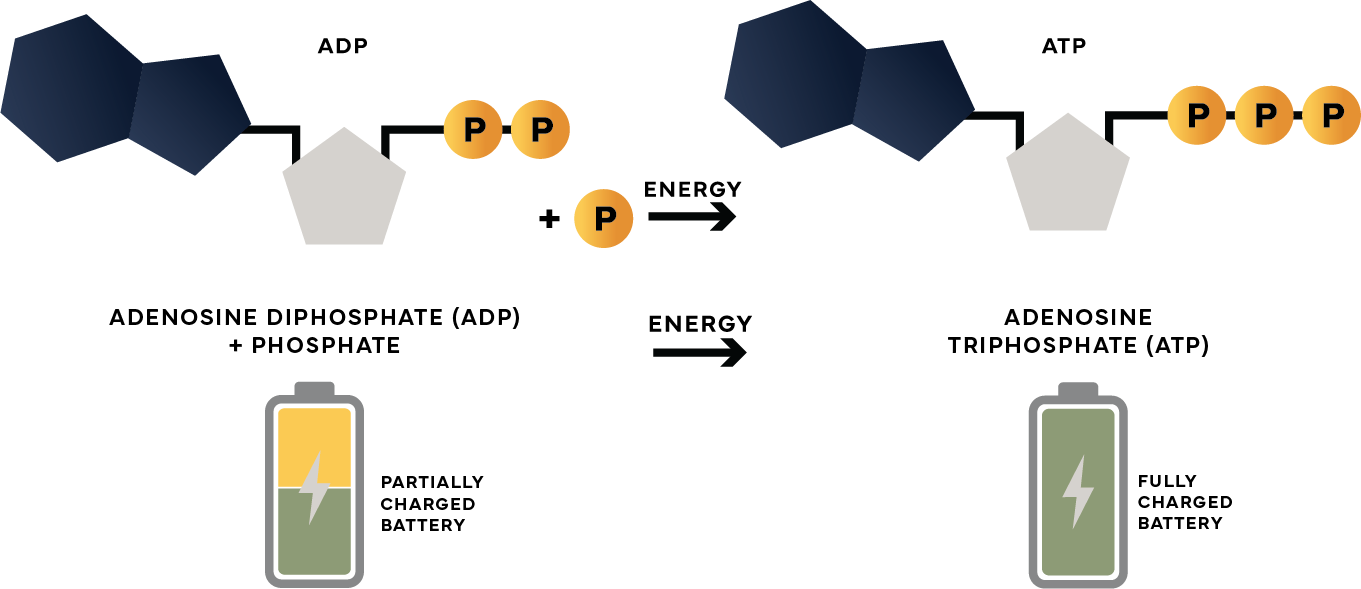
What are the Sources of Creatine?
Creatine is found naturally in many of the foods we eat. It’s also made in the body. Our bodies make around a gram of Creatine each day from the amino acids Arginine, Glycine, and Methionine
The body uses these three amino acids to synthesize Creatine, the majority of which is produced in the liver. The Creatine produced is then stored in skeletal muscle as Creatine Phosphate and used for energy.
If we eat a well-balanced, diet and have no dietary restrictions or limitations, we could be consuming upwards of another gram or more a day from sources such as Poultry, Fish, Red meat. Seafood is also a rich source of Creatine. A typical serving (4 ounces or 113 grams) of Chicken contains around 400 - 500 milligrams of Creatine.


Vegetarians can consume a variety of protein sources throughout the day to get the recommended amounts of Amino Acids that the body needs to make Creatine. Peanuts are a great source of Arginine, as are Walnuts, Coconuts, Soybeans, Chickpeas, and Oats. Glycine is found in Spinach, Soy and Sesame Seeds. Methionine is found in Brazil Nuts, Oats, and Sunflower Seeds.
But here’s the thing. For those looking to help support their performance and build power in their chosen sport or in the gym, the Creatine acquired naturally may not be enough to support the kind of performance benefit they are looking for. This is where a product like Creatine Monohydrate comes in.
Taking Creatine Monohydrate as a supplement can help build stores of Creatine in the muscle tissue by reaching saturation levels in skeletal muscles ahead of training.
How does Creatine work in the body?
Before we get into a little science and biology, it’s worth noting that Creatine has been the subject of over 500 published studies and 100 published human studies, making it one of the most researched dietary supplements over the past four decades. It’s effectiveness and safety for healthy adults is widely recognised, however it is advised to follow a planned daily-intake strategy, consistently.
Now let’s dive into the production of energy in the body. Every cell needs energy to function and muscle cells need it to contract. This energy is in the form of a molecule called ATP (Adenosine Triphosphate).
Now let’s dive into the production of energy in the body. Every cell needs energy to function and muscle cells need it to contract. This energy is in the form of a molecule called ATP (Adenosine Triphosphate).
Energy is produced when one of the three phosphate groups is removed from the ATP molecule. Once the phosphate group is removed, only two remain. The molecule with the remaining groups is now called ADP (Adenosine Diphosphate).
The interesting thing about ADP is that it can be ‘recycled’ to produce more energy again. If a third phosphate group is once again added to the two remaining groups, then ATP is generated again and becomes a renewed source of energy.
Does creatine supplementation damage the kidneys?
In healthy adults using recommended dosages, there is currently very limited evidence showing creatine causes damage to the kidneys.
NOTE:
Extensive research over the last decade has shown that oral creatine supplementation appears to be safe when used by healthy adults at recommended loading (20 g/day for 5 days) and maintenance doses (<3 g/day), and it was largely devoid of adverse side effects.

This brings us back to Creatine. When we consume Creatine, the body converts Creatine (as a supplement, Creatine Monohydrate is the most widely researched) to Creatine Phosphate. Creatine Phosphate donates its phosphate group to ADP, thus making ATP.

Getting the Best Benefits from Creatine
Taking 3 grams of Creatine a day (on both training and non-training days), over time (at least a month), combined with high-intensity activities helps support performance. Using this method a typical adult can expect to begin realizing benefit in about a month or so.
In short, Creatine can support any athletes whose sport requires power.
A Few Final Things to Consider.
- As Creatine works chronically over time and not acutely, loading Creatine is not necessary. Once muscle Creatine levels are maxed, you are not going to significantly increase levels further.
- Also you don’t need to consume large amounts of sugar or anything else to “increase absorption.”
- And time of day for consumption is less important than consistency over longer periods like a month, so you can consume whenever is most convenient for you.
- It’s recommended to take Creatine on training and non-training days, again, whenever it’s convenient.
- There is no need to avoid Caffeine. Creatine can be added into anything you enjoy eating or drinking.
- Creatine can be consumed by both healthy adult men and women.
So if your goals include increasing power or explosiveness, there is no reason why Creatine, managed well and used by healthy adults, shouldn’t be a primary tool in your performance toolbox.
